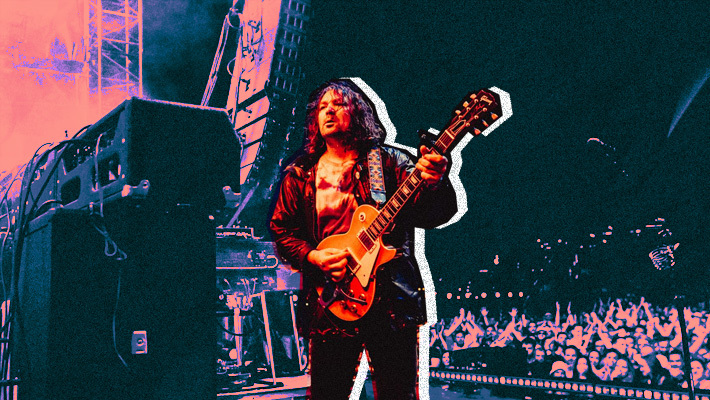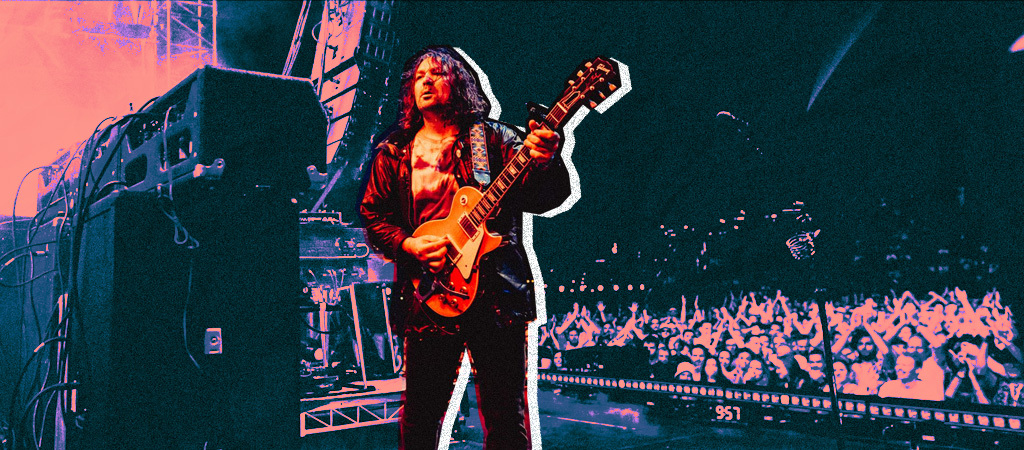Like Live Drugs, Live Drugs Again is a Frankenstein version of a live record, with each track composed of stitched-together moments lifted from countless performances. (I suspect only Granduciel knows exactly the myriad sources from which each song derives.) This approach makes sense coming from a man who assembles music like the rest of us contemplate jigsaw puzzles. Though the purist in me objects to this approach, especially given the number of excellent intact War On Drugs bootlegs just waiting for a sonic upgrade. (The three-show “Drugscember To Remember” stand from 2022 immediately comes to mind.) While these shows aren’t as technically perfect as the growing Live Drugs franchise, they have a sense of narrative and vibe that the official concert releases can’t match.
Of course, when I put on Live Drugs Again, the purist in me is eventually drowned out. This is epic rock ‘n’ roll that manages to top even the titanic Live Drugs, if only because The War On Drugs are that much better as a live band. Yes, I could quibble with some of the song choices. (I, for one, would have replaced “Pain” — a repeat from Live Drugs — with the rousing cover of Bob Seger’s “Against The Wind” that highlighted many shows on this tour.) But how can I complain when this band clearly “let the cowboys ride” on their own songs in ways that often top their recorded takes?
Several tracks already feel like definitive versions. “Harmonia’s Dream” was a consistent highlight of the I Don’t Live Here Anymore tour, and Live Drugs Again honors that with an extended open in which a trance-inducing electronic pulse is augmented by infectious arena-rock audience clapping. The build in “Old Skin” to Hall’s dramatic entrance packs a wallop on the album, but live it has that extra E Street-esque oomph that really elevates the song. And then there’s “I Don’t Live Here Anymore,” which feels more and more like The War On Drugs’ finest anthem. On Live Drugs Again, we hear Granduciel honor his band in the intro, giving hype-man intros for each member and drawing out the last syllable in every name like he’s Paul Stanley addressing the unwashed hoards at Cobo Hall.
This sort of showmanship from the once-reticent leader of The War On Drugs is the most obvious departure point from the original Live Drugs. At some point during the I Don’t Live Here Anymore era, Granduciel embraced his inner rock star, drawing on the impassioned evangelism of perhaps his two most important influences, Bruce Springsteen and Mike Scott of The Waterboys. On “Burning” and “Under The Pressure,” he pushes his vocals like never before, practically shouting his way to new musical climaxes as his fellow bandmates aspire to maximum levels of heartland rock grandiosity. It’s no longer “Burning,” it’s now “Burninnnnng.” And “Under The Pressure” is gone, meet “Under The Preshhhhahhhhh!” (There’s also the matter of Granduciel’s always stellar guitar playing, which achieves peak shred-itude on the sultry “I Don’t Wanna Wait” and the welcome Slave Ambient deep cut, “Come To The City,” not to mention the obvious six-string showcase that is “Under The Pressure.”)
Putting out multiple live albums in relatively quick succession during an era when most bands wouldn’t think of putting out a single concert record says a lot about how The War On Drugs have evolved since that conversation with Aaron Dessner at the end of 2011. It reasserts the group identity that Granduciel pushed to the fore on the last studio record, as well as the importance of their live show as a calling card on nearly equal footing with their immaculate and deliberative studio work.
It also reiterates The War On Drugs’ relationship with hugeness. It differs from The National’s relationship with hugeness, which in recent years has manifested with Dessner’s entrée into the worlds of Taylor Swift and stadium pop. It’s hugeness as a form of celebrity and cultural capital. Granduciel has only fitfully flirted with that sort of hugeness, contributing guitar to records by Beyoncé and Miley Cyrus. Otherwise, his brand of hugeness is musical and spatial. As The War On Drugs’ audience grows, the music continues to expand ever-so-slightly beyond the confines of wherever they’re playing. When I saw them open for The National at the Beacon Theater 13 years ago, they were a small band who filled every square inch of the venue with guitar drones and synth swells. It was a wave of sound intended to overwhelm the senses, which it did.
Live Drugs Again feels like that, too. It’s the widest iteration yet of the “wide horizon” sound. The War On Drugs made the Beacon feel like a phone booth. And every time I’ve seen them since, they have given me the same feeling, whether it was a theater, an arena, or an open field. I look forward to seeing them push toward the next horizon.

